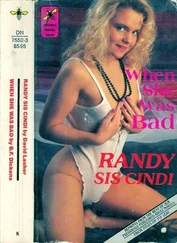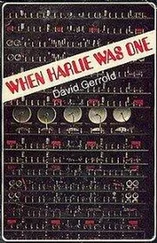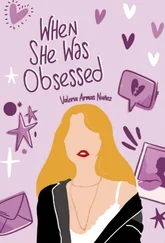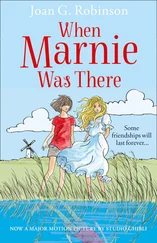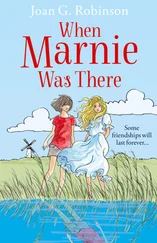Sue Webster was born in Leicester, in 1967, and Tim Noble in Gloucester, in 1966. The couple first met at Nottingham Polytechnic, in 1986, where they were both studying Fine Art. Their personal relationship, from this initial meeting, has become a major informant of their creative partnership as artists. The couple do not claim to be two people working as one artist; rather, the direction of their work is dictated and considered by the conflation of their separate ideas, enthusiasms and acquired skills. As Tim Noble remarks, ‘We are consistently inconsistent; that’s one of our greatest strengths.’
Over the course of their career, Tim Noble and Sue Webster have worked in many different artistic media: they make paintings, sculptures and assemblages of lights and neon. The couple have also turned their hands to fly-posting montaged pictures of themselves, and once held their own street tattoo parlour during the ‘Livestock Market’ art fair held in Rivington Street, east London, in 1997.
Above all, however, Tim Noble and Sue Webster have worked with the idea of themselves, as artists who are making works within the somewhat febrile climate of contemporary British culture. Their intentions are maybe explained by a work they made in 1998, called ‘Dirty White Trash (with gulls)’. In this piece, ‘six months’ worth of artists’ rubbish’ has been meticulously assembled and crafted – itself a contradictory act – in such a way that when light is projected upon the seemingly chaotic heap, it casts the shadow of the artists in perfect profile.
Caught with the accuracy of a silhouette, this shadow piece shows the couple relaxing back to back, the one sipping a glass of wine, the other enjoying a cigarette. Meanwhile, two stuffed seagulls are picking at a few discarded chips on the edge of the dumped rubbish. What could this tell the viewer about Tim Noble and Sue Webster as both a couple – they live together as well as work together, and they have an uncanny physical similarity, which makes them look like brother and sister – and as artists?
One answer might be that they regard themselves as determinedly careerist, within a line of work – the art world – that they regard as a complex game, and one in which cheats, short cuts or open ridicule of the prevailing mainstream can all be taken as valid moves. Following hard on the heels of this assessment of the pair, however, is the fact that their work can be divided into that which is extremely simple to make – little more than the cut-and-paste techniques of ersatz punk montage – and that which is painstakingly crafted. Taken all together, the different strands of their art entwine to make a coded polemical commentary on cycles of life and decay – the mortality of species and the deliquescence of cultural movements or individual careers. In this sense, Noble and Webster could be described, with accuracy, as ‘decadent’ artists.
On leaving Nottingham, the couple took up a residency, in 1989, in the sculpture studios at Dean Clough, in Halifax. It might be taken as eloquent of their artistic temperament – or of the recurring motifs within their later work, suggesting a desire to keep themselves at arm’s length from their peers – that Noble and Webster headed north just as the movement that would become mediated as Young British Art was beginning to gather momentum in London.
As Damien Hirst had curated his influential ‘Freeze’ show at the PLA building in London’s Docklands the previous year, so within two years the mere idea of ‘young British art’ would have become a usefully malleable phenomenon. Taken up by the media, as much as the patrons, galleries and collectors, this new direction in British art – as it merged with other pop cultural strands – would be taken to represent the temper of the zeitgeist.
In 1992, Tim Noble came to London to study on the sculpture MA course at the Royal College of Art. By this time, the whole phenomenon of Young British Art was following, point for point, the route between a fledgling metropolitan bohemia (those former urban badlands, colonized by artists) and ‘uptown patronage’ which the American cultural commentator, Tom Wolfe, had defined in his book The Painted Word nearly two decades earlier.
Cutting-edge contemporary art, ‘warm and wet from the Loft’ – as Wolfe describes it – can enjoy a relationship with its patrons that benefits both parties. The ensuing social and cultural milieu created by this relationship – and as seen, in Britain, to have been achieved through the mediated phenomenon of ‘yBa’ – becomes a new kind of orthodoxy, influential in taste-making, and provoking inevitable response.
The translation of young British art into a social phenomenon, with its own cast of characters and social types, and its particular topography around the Hoxton and Shoreditch districts of east London, seems central to an understanding of the earlier work of Tim Noble and Sue Webster. As the couple moved to Hoxton in 1996, holding their first solo exhibition, ‘British Rubbish’, at the Independent Art Space, they arrived on the ‘YBA’ scene as the partying of that movement was already approaching its second wind. For Noble and Webster, the appropriation of ‘YBA’’s own idea of itself – as an oven-ready phenomenon, as it were – became their point of intervention.
In terms of their style, Noble and Webster have been claimed by some critics to revive the aesthetics – and tactics – that were set in place by the first wave of British punk rock between 1976 and 1978. Too young to have participated in this movement as anything other than youthful observers, Noble and Webster can be seen to have taken a received idea of punk – the strategies, the baggage and the healthy bloody-mindedness – and applied it to their own generation’s attempts to re-route popular culture through the media of contemporary art.
Prior to ‘British Rubbish’, Noble and Webster had already made works that centred on the sloganeering, fly-posting and do-it-yourself ethos of punk pamphleteering. Tim Noble had usurped a billboard poster competition run by Time Out magazine in 1993, with his work ‘Big Ego’. The competition was open to people who had been resident in London for twenty-five years (which Noble had not) and to this extent Noble’s design – a crudely assembled poster, featuring his face and the statement, ‘Tim Noble Born London 1968’ – was revelling in its own falsehood. Noble, after all, was born in Gloucester in 1966.
Similarly, in 1994, Noble and Webster doctored an image of the legendary artists Gilbert & George, by simply sticking their own faces over those of the original. They called this work ‘The Simple Solution’, and it followed the same thinking – in terms of making a creative virtue of hijacking an existing graphical device – as Noble’s disruption of the Time Out poster competition.
If one of the distinguishing characteristics of the ‘Young British Artists’ – as a mediated, social type – was to own or affect an image of ‘dumbed down’ rebelliousness (the ‘Boho Dance’ in Tom Wolfe’s definition of the type), then Noble and Webster were amplifying this tactic to the point of caricature.
More than one critic has remarked how their street tattoo parlour, with its amateurish, felt-tip-pen ‘tattoos’, exposed the way in which a previously working-class, light industrial area of London had become colonized in the name of art from the power-base of a bourgeois economy and lifestyle. This was Wolfe’s ‘Boho Dance’ made visible. As David Barrett was to write of the event: ‘Young artists finally had the hardcore tattoo they’d always wanted, and they strutted up and down Charlotte Road like a bad actor doing the LA Bloods.’
By the middle of the 1990s, however, Noble and Webster were beginning to plan intensely crafted pieces. Inspired by a trip to Las Vegas – although they say that watching videos of films about Las Vegas inspired them more – the couple began to work with light pieces. Exuberant, vivacious and redolent of the perverse glamour of British travelling fun-fairs, these light pieces took the ‘trash aesthetic’ of rockabilly gothicism and turned it into free-floating emblems of desire and sensory overload.
Читать дальше



